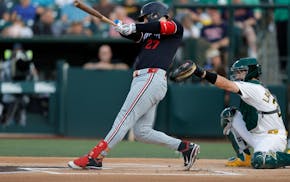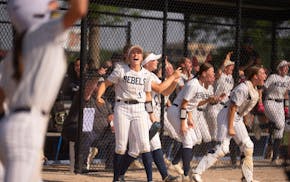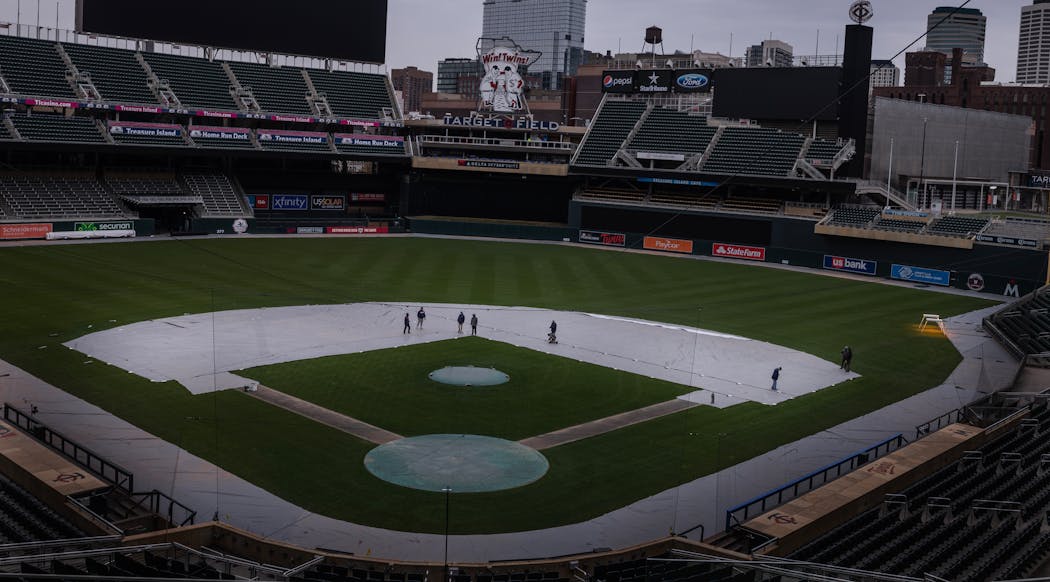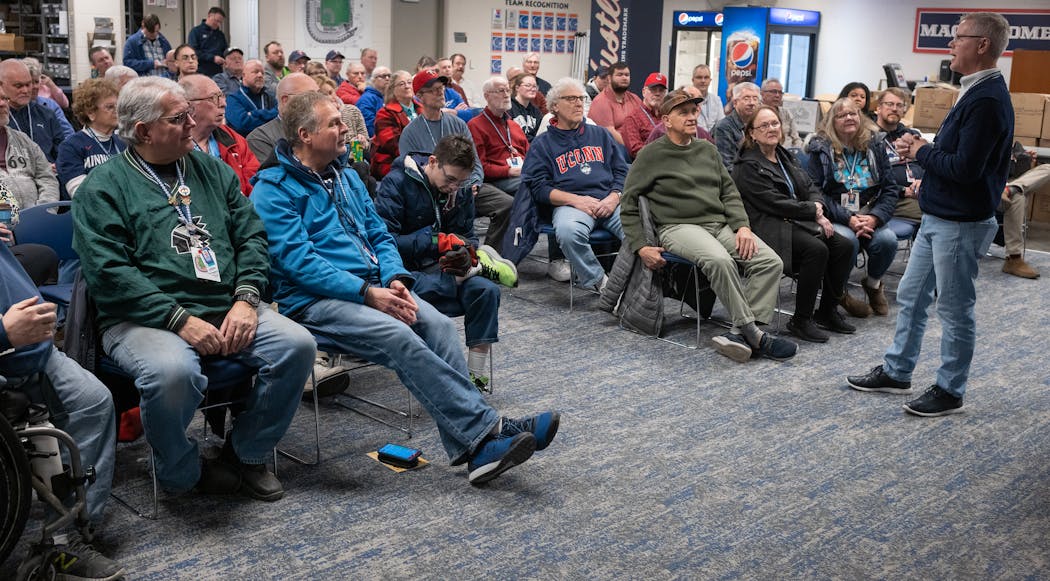It was two weeks before the Twins home opener, and Dave Horsman had his mind on the weather.
A snowstorm heading toward Minneapolis had the potential to complicate work that remained to get Target Field ready for its April 4 debut, expected to draw more than 38,000 fans. The three-day storm ended up being the biggest snowfall of the season.
Some seasons "we might have to spend a lot of time clearing snow" from the stands with shovels and warm water, explained Horsman, the Twins vice president of ballpark operations. But this year, better weather was returning, and "it seems to be taking care of itself."
Unpredictable weather is just one of the challenges the staff at Target Field deal with every day. Each spring, the ballpark's full-time maintenance staff of eight swells to several dozen as workers spend weeks cleaning, polishing and updating everything from the basement to the top of the foul poles.
Take the field, for example: It's not easy to grow grass in March in Minnesota, even if the turf is heated from below. The angle of the sun makes it tricky and a spot midway down the first base side foul line doesn't get enough light.
As ground crews scrambled to protect the infield dirt from the coming snow, two outdoor grow lamps provided some artificial sunlight for the grass.
On the main concourse, Bill Barnes was working on a different type of lighting. He spent roughly a month replacing about 140 sconces with LEDs units to make the main concourses brighter.
"We've been working to retrofit all of our lighting," Horsman said. "We've already done the field lights. Year after year, we try to get more energy efficient."
Nearby, puddles of water spread out on restroom floors as plumbers got water flowing again. When a worker who hurried by was asked what he was after, his reply was simply, "a leak."
Suite updates
Up on the club level, preparations were underway to convert the Delta Sky360 Club to the Thrivent Club. This required workers to replace granite slabs etched with the Delta logo, and contractor Dewayne Manson had to replace logos throughout the club level.
Rebranding is a big part of the work of getting Target Field ready each spring. Sponsors change or want new logos, so a lot of emblems across the 1 million-square-foot stadium are updated.
Last season, when the Twins refreshed their logo, Manson worked to replace 4,500 team decals all around the ballpark. "I've been here every spring since the stadium opened," he said.
The ballpark is almost constantly getting a fresh coat of paint, thanks to Matt Saros,who's spent more than a decade as the staff painter. Saros spent a lot of time in March updating suites and preparing them for new tenants.
"When we get a new suite holder, they get a choice of a graphics package and paint," said Saros, who does plenty of hole patching and wall touch-ups. "I'm painting year round," he said.
'A lot of beer'
It's not just paint and decals that need to be just right. Graphics and video also are reviewed.
In addition to the giant scoreboard added in 2023, Target Field has nearly two-dozen other screens and video boards. Most of what fans see on those screens during each game is produced from the scoreboard control room.
On a recent March afternoon, some of the reds on Twins' lettering looked orange, so a technical crew was working to get the hue just right. It's just one of a multitude of adjustments the presentation team will make before the opener.
"Once we get it dialed in, we'll ride it all season long," said Jeremy Loosbrock, senior manager of game presentation and design, who wants the screen colors to be spot on.
And a baseball game wouldn't be the same without beer. Target field has 14 keg coolers. During the season, the stadium typically has 1,000 kegs on hand.
Draft lines are flushed and sanitized after each home stand and at the end of the season. Each spring, workers like Jerry Peterson spend days stocking those coolers for the home opener.
"We roll them all in and stack them by hand," Peterson said. "There's a lot of beer."
Finally, nothing happens at the ballpark — during a Twins game or a concert — without 2,000 staffers who take tickets, serve food, provide security and do everything else during events. They're mostly seasonal workers, but many return each spring for training and orientation, including some ushers Horsman hired in 1996 when he started working for the team.
"We have a lot of really talented people who've been here a long time and are well seasoned," Horsman said.

Pair of home runs help Twins roll to another victory over Athletics, 6-1

Softball state tournament, live from North Mankato: Bloomington Jefferson, Champlin Park reach 4A final
Twins starter López has Grade 2 shoulder strain, expected to miss 2-3 months
Festa gets his wake-up calls and joins Twins in Sacramento



